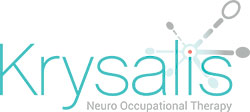Activity - an occupational therapist's key tool

Activity – an occupational therapist’s key tool – is being tipped as the best means to overcome some of the challenges associated with acquired brain injury (ABI).
Traditionally, the prescription following ABI or a stroke is periods of rest, but new research now suggests this may not be the most-effective solution.
The study (1) , carried out by a US university team on mice, is likely to trigger further studies into activity-centred treatment strategies which, it is hoped, will result in speedier recovery times for patients.
Dr Randy Bruno, the study's senior author, said:
 We tend to immobilise people when they’ve suffered a stroke; the recovery of seemingly simple tasks - walking, grasping - can be a long road.
We tend to immobilise people when they’ve suffered a stroke; the recovery of seemingly simple tasks - walking, grasping - can be a long road. 
“Our findings suggest that maybe, in some cases, patients could be reintroduced to these activities much earlier in order to speed recovery. Lengthy rest periods are supposed to be key to the brain's healthy recovery, but our study in mice demonstrates that re-engaging the brain immediately after injury can actually be more helpful than resting it -- an observation that was completely unexpected."
The study, at Columbia University’s Zukerman Institute, marks an important step in the research team’s ongoing efforts to unravel the workings of the brain's cerebral cortex.
The cerebral cortex is the largest region of the mammalian brain and plays a key role in many functions, from sight and smell to movement and memory.
For this study in mice, the focus was on a part of the cerebral cortex called the barrel cortex, which is thought to be crucial for sensing and analysing signals.
But what types of activities can help the brain bounce back?
Activities that are focused on retraining the brain in fine motor skills, attention and memory will all help increase independence after brain injury.
Repeatedly practising these activities helps the brain to rewire itself and form new response pathways around areas of the brain that have been damaged.
Occupational Therapists can advise on the best techniques to carry out such tasks, and aids or apps that make them easier during recovery.
Some of the more basic tasks, called Activities of Daily Living (ADLs), include:
- Dressing
- Bathing
- Cooking
- Eating
Aids and apps that support this process physically and/or cognitively, depending on the impairment, include:
- Mobility and home adaptation aids
- MyTherappy – a free NHS service with over 100 post-ABI apps
- Maze drawing - for improving movement planning, attention and processing
- Complete the drawing - helps improve visual-spatial function
- Board games - helps planning and problem solving and fine motor skills
- Finger curls – improves fine motor skills
- Card recall – improves memory
References
1. Bruno, Randy M, et al. Sensation, movement and learnig in theabsence of barrel cortex. s.l. : Nature, 2018.
Have you visited our Talking heads page yet? ‘Talking heads’ is a means of bringing together individuals and professionals interested in brain injury. The blogs, stories, films, current research and news items aim to inform and spark moments of inspiration, reflections and points of discussion.

